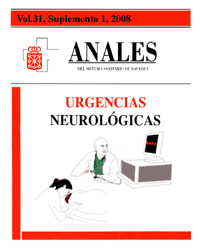Stroke in the XXI Century. Emergency care
Keywords:
Ictus, Código ictus, Unidad de ictus, Repercusión, Infarto malignoAbstract
Cerebrovascular diseases have reached epidemic proportions worldwide. They are the major cause of mortality in developed countries, accounting for over one-quarter of worldwide documented deaths, and the leading cause of severe disability in adults. Given that Spain will become one of the countries most affected by population ageing, an increase in the incidence of these diseases is expected in coming years. Several studies have reported that public levels of awareness of stroke warning signs, symptoms and risk factors are relatively low. Information campaigns aimed at increasing these levels of awareness and considering stroke as a neurological emergency are needed. The stroke code is a system which allows rapid identification, notification, and transfer of stroke patients to the emergency units. Technological advances in stroke diagnosis, and the development of effective therapeutic measures, such as thrombolytics, require a coordinated multidisciplinary approach. Treating patients in Stroke Units is the most effective and efficient approach in acute ischemic or hemorrhagic stroke management. In coming years research advances will provide new and better strategies in acute stroke treatment.Downloads
Downloads
Published
How to Cite
Issue
Section
License
La revista Anales del Sistema Sanitario de Navarra es publicada por el Departamento de Salud del Gobierno de Navarra (España), quien conserva los derechos patrimoniales (copyright ) sobre el artículo publicado y favorece y permite la difusión del mismo bajo licencia Creative Commons Reconocimiento-CompartirIgual 4.0 Internacional (CC BY-SA 4.0). Esta licencia permite copiar, usar, difundir, transmitir y exponer públicamente el artículo, siempre que siempre que se cite la autoría y la publicación inicial en Anales del Sistema Sanitario de Navarra, y se distinga la existencia de esta licencia de uso.








